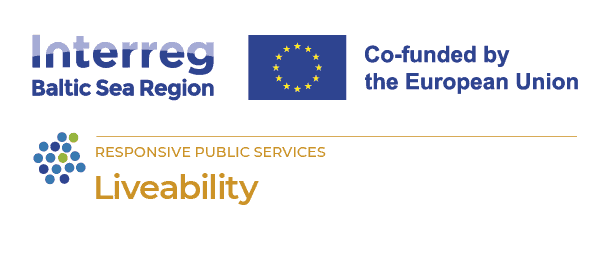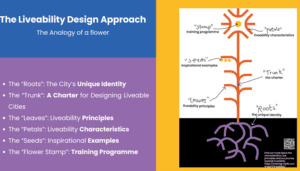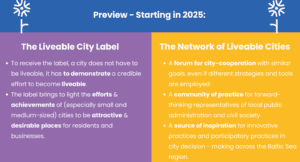
Designing Liveable Cities: Seminar on Urban Sustainability and Resilience in the Baltic Sea Region
08 November 2024
How do we (together) shape the future of our cities? How can cities re-shape their ways of woking, collaborating and communicating towards Liveability? How can city administration enable and empower civil servants, citizens and other stakeholders to engage in this transformation process? How can design approaches support cities around the Baltic Sea to become more liveable?
These were key questions which were raised in the Designing the Liveable Cities seminar, that was held as part of the Baltic Sea Region’s ongoing efforts to promote sustainable and resilient urban environment at the EUSBSR Annual Forum in Visby (29-31 October 2024).
The event was organised in collaboration with the Union of Baltic Seas (UBC) and VASAB, and brought together policymakers, urban experts, and regional representatives to advance liveability across Baltic cities.
The interactive session emphasized implementing the VASAB Vision 2040 to make small and medium-sized cities in the Baltic Sea Region more attractive and sustainable. The Liveability Design Approach (LDA) developed in the Liveability project was showcased as an examples how such a vision could be implemented in small and medium sized cities. By taking a public interest design approach that prioritize well-being, inclusivity, and adaptability to current and future challenges inclusivity and urban reliance can be enhanced. Different concrete approaches how to enhance Liveability in different contexts and cities around the BSR Region were presented.
In addition to contributions from Charles Landry, Paulina Szewczyk, Chairperson of the UBC Planning Cities Commission and Egija Stapkēviča, Deputy Head of VASAB Secretariat, Andrea Cederquist from the Heinrich-Böll Foundation and Lead Partner presented the project, its components and approach. At its core, the Liveable Cities Network envisions cities thriving in liveability. By placing public interest and collective well-being at the heart of urban planning, it promotes inclusive, sustainable development of public services and spaces. This is where the Liveability Design Approach (LDA) composited by different elements comes into play, symbolized by the image of a flower.

Image: The Liveability Design Approach
Focusing on the preliminary outcomes of the Liveability project, she discussed the charter created to guide cities in their efforts. The Liveability Design Approach includes principles that emphasize adaptability, inclusivity, and citizen engagement in city planning, providing cities with a structured method for integrating these values into local policy and development. Andrea’s presentation underscored the importance of a proactive approach to urban challenges, which not only addresses current needs but anticipates future demands.
The seminar also included insightful case studies, spotlighting Riga and Ukraine’s innovative approaches to enhancing livability and resilience in urban development: Marta Kotello, Architect at the Grīziņkalns neighborhood association and Kateryna Baulina, Deputy Director of the NGO Analytical Center «Reformator», UBC counsellor presented case studies on community-driven urban planning in Riga and Ukraine. Marta highlighted Riga’s focus on public-sector and neighborhood collaboration to enhance resilience. Kateryna shared insights from Ukrainian cities, emphasizing rebuilding efforts that integrate resilience and learning from other urban models. Both case studies illustrated the value of mutual learning and the role of local partnerships in creating urban environments that can withstand and recover from crises.
Launching the Liveability Label and Network: Recognizing Commitment to Urban Liveability
Andrea concluded the seminar by introducing the upcoming “Liveability Label,” a recognition for cities that demonstrate meaningful efforts toward liveability. She explained how this label would provide a framework for cities to share best practices, connect with a network of like-minded municipalities, and gain recognition for their progress. Rather than awarding perfection, the Liveability Label encourages cities to continuously engage in the journey toward liveability, offering a structured path to achieve these goals over time.

Image: Overview of the Liveable City Label and Network of Liveable Cities starting next year.
If you are interested in know more, please contact us at: info@liveable-cities.net





